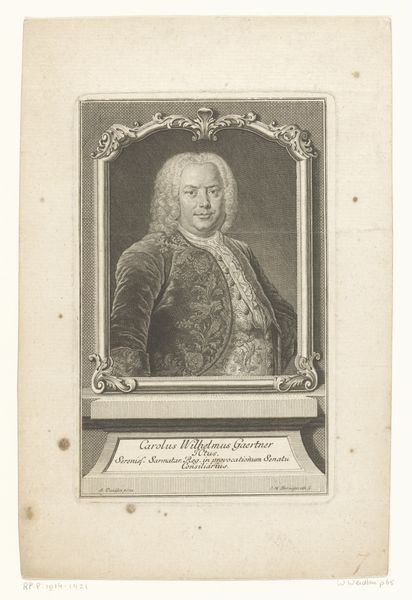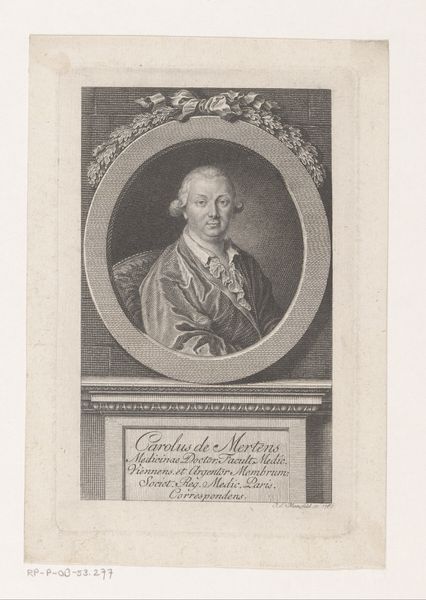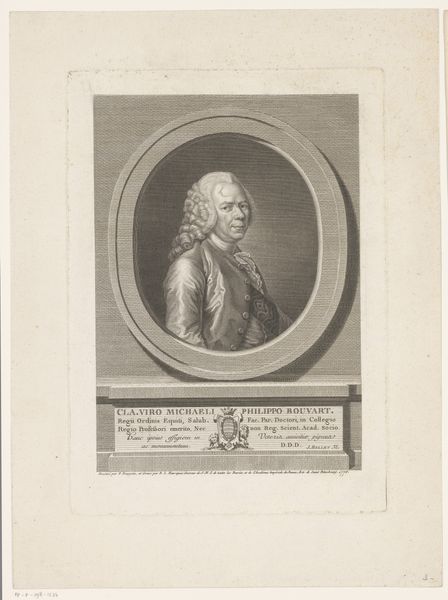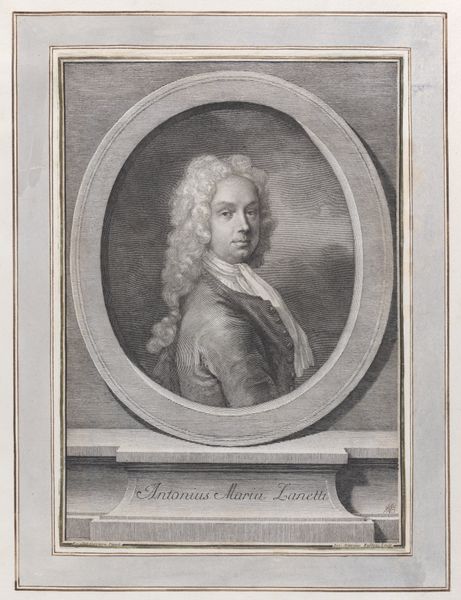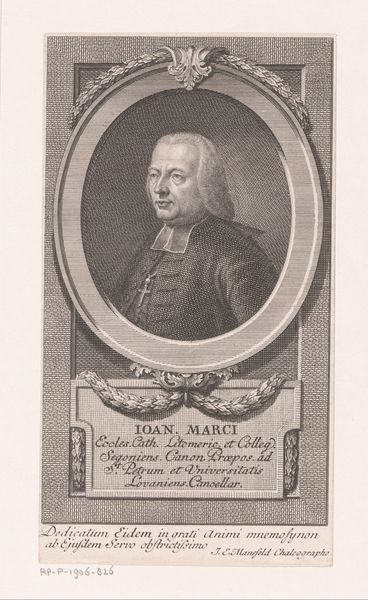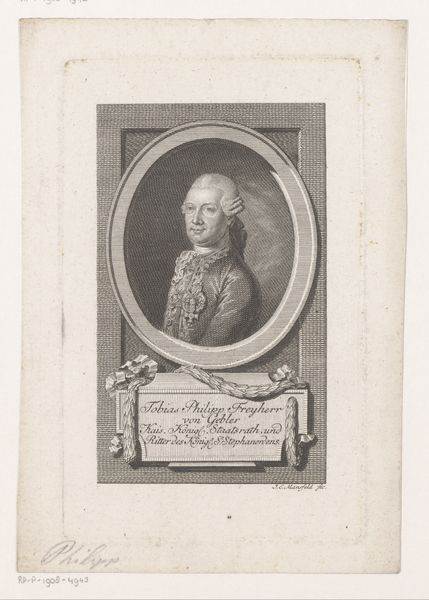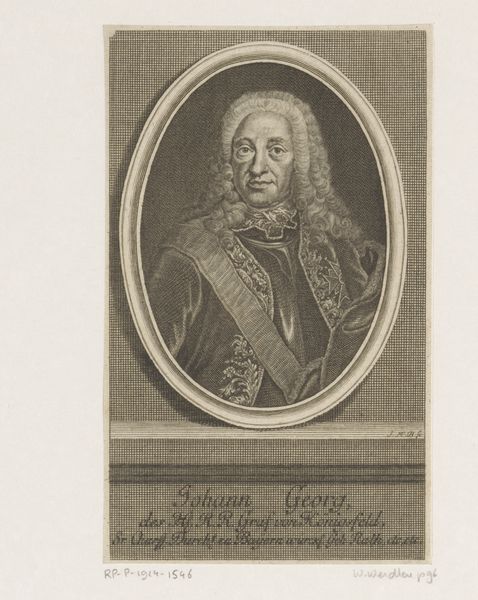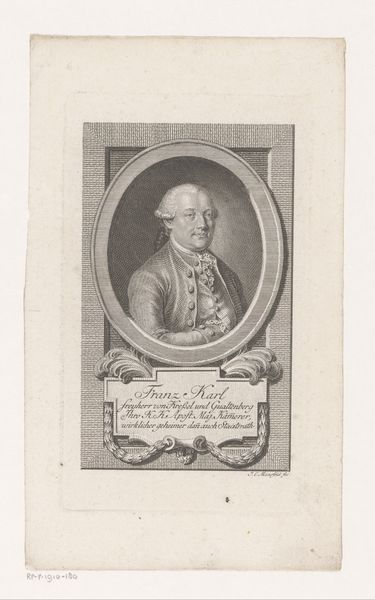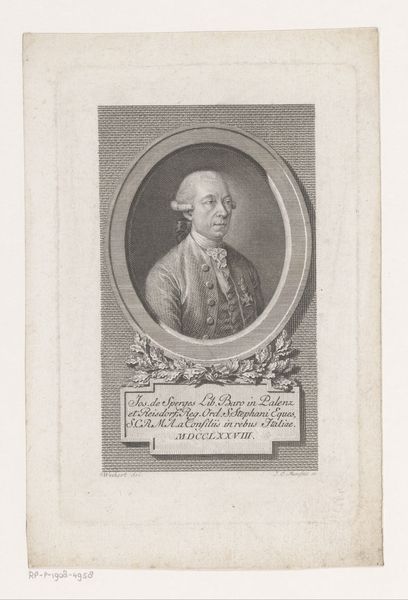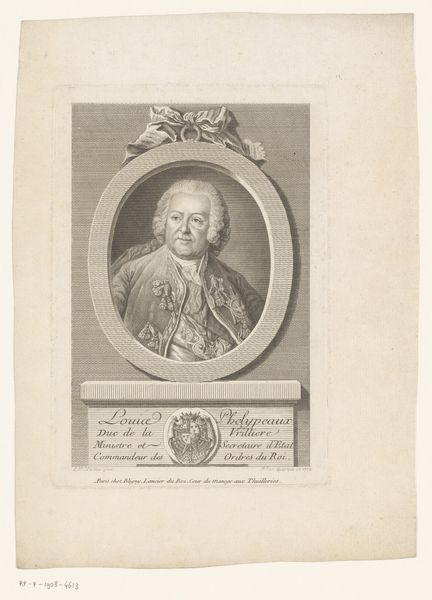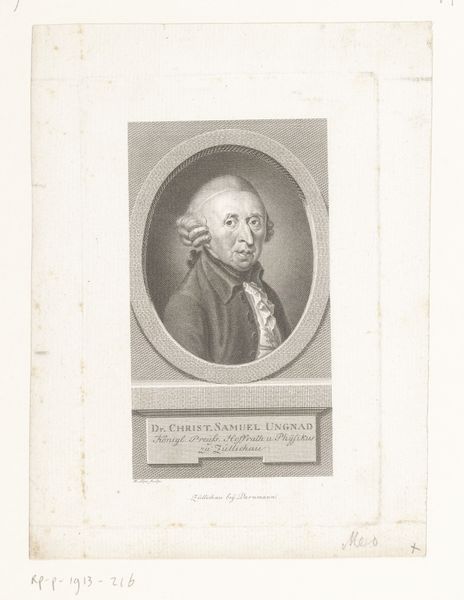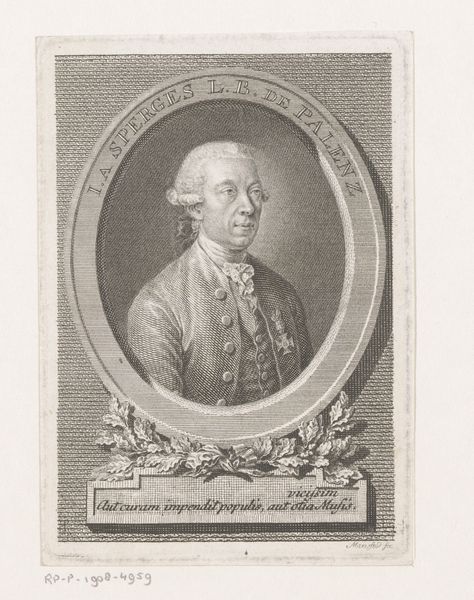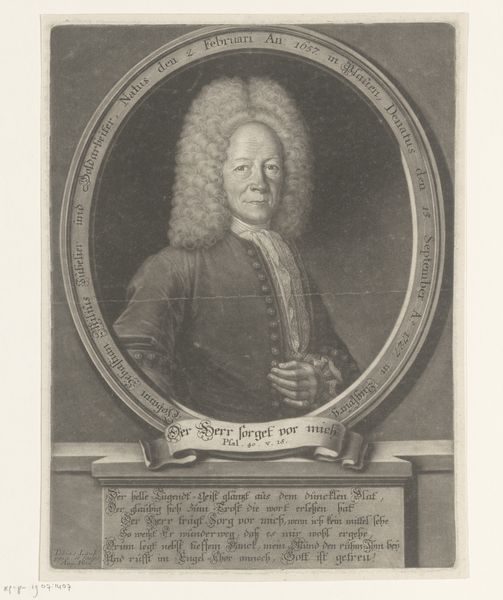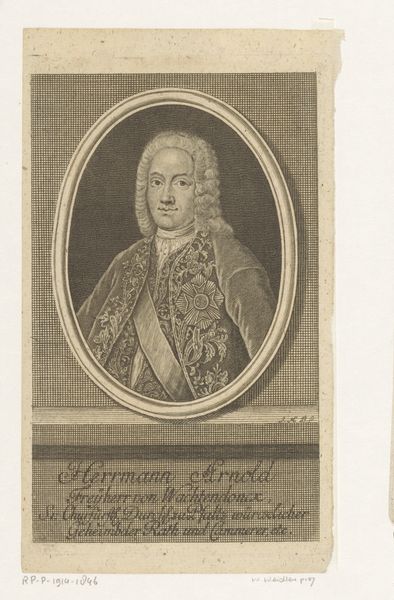
Dimensions: height 234 mm, width 178 mm, height 66 mm, width 177 mm
Copyright: Rijks Museum: Open Domain
Curator: So, what do you make of this image, Editor? What’s your immediate read? Editor: Austere, I’d say. Rather formal and…embalmed. Not in a macabre sense, but very consciously posed, contained. Almost as if he knows his image is destined for history books. I mean, this is 'Portret van keizer Frans I Stefan,' or Portrait of Emperor Francis I Stephen. The engraving, which comes to us courtesy of Johann Ernst Mansfeld, was probably executed somewhere between 1765 and 1796. What jumps out at you? Curator: You’re spot-on about the formality, and 'embalmed' is the perfect word! It captures the...preservation aspect that portraiture in this era often aimed for. But I also see it as an attempt to embody power through symbolism. The oval frame reminds me of a classical cameo. Notice how he's presented atop a sculpted pedestal, suggesting a man of elevated importance. It's a visual language common in Baroque art to convey status. The delicate line work is very evocative to me; like looking into a lost world. Editor: That oval intensifies that sense of…containment. He’s in there, preserved for posterity, but also separated. An object of study, not quite a living person. The inscription beneath the image—which talks of transferring virtues to posterity, even likening him to family deity, the Augustii Familia – reinforces that. It reminds me a little bit of the visual language of early playing cards. The pedestal definitely drives home the authority angle. Curator: I agree—the oval becomes a portal and a barrier. The inscription’s intention, of course, to bolster the subject with text! In terms of iconography, though, consider the details—his ornate jacket, the style of his wig... Each carefully chosen to signal his rank. But notice the absence of more overt symbols, like a crown or scepter. Instead, we get a softer, almost bourgeois impression—the impression of a cultivated gentleman. He’s regal, but also, somewhat accessible. Editor: And do you find him accessible, honestly? I still feel there's something very distancing. I wonder what a contemporary audience would have read in this? Did they see accessibility, or simply…power? Curator: Oh, accessibility is, perhaps, overselling it—'approachable' might be closer. I wonder if there was some tension intended in it. And you know, thinking about this print in relation to other royal portraits of the time, the image leaves me contemplative—almost sad—but, then again, maybe that's my modern sensibility at play! What a peculiar figure from the past… Editor: Indeed. A very strange world speaks to us from this picture. Very strange, but perhaps it helps us find more about ourselves here and now.
Comments
No comments
Be the first to comment and join the conversation on the ultimate creative platform.
